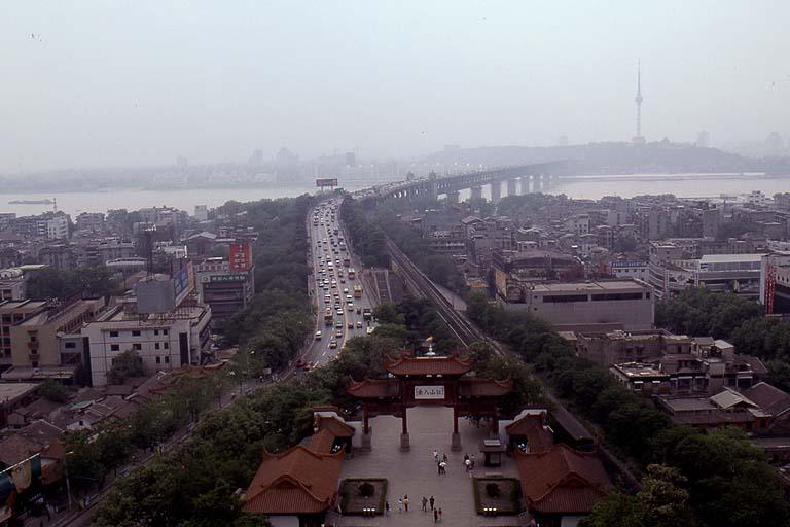Three Gorges
The Three Gorges region is a world renowned region of beauty and historical significance. It lies on the Yangzi river, flowing through the heart of China.
The gigantic Three Gorges dam is currently being built on it. When it is finished, the water levels will rise and turn the river into a giant inland lake. It will destroying the unique geographical and historical features of the Three Gorges and affect the lives of millions of people.
I visited the Three Gorges region in May 2002, to see it before the waters start to rise. What I saw was a land of change: geographically, socially, and economically.
The trip began in the city of Chongqing. This is a large city strategically placed on the river and a major point of trade. This is the People’s Assembly Hall, and is a symbol of the city. It was built in 1951 and is based on the design of the Ming and Qing dynasty palaces.
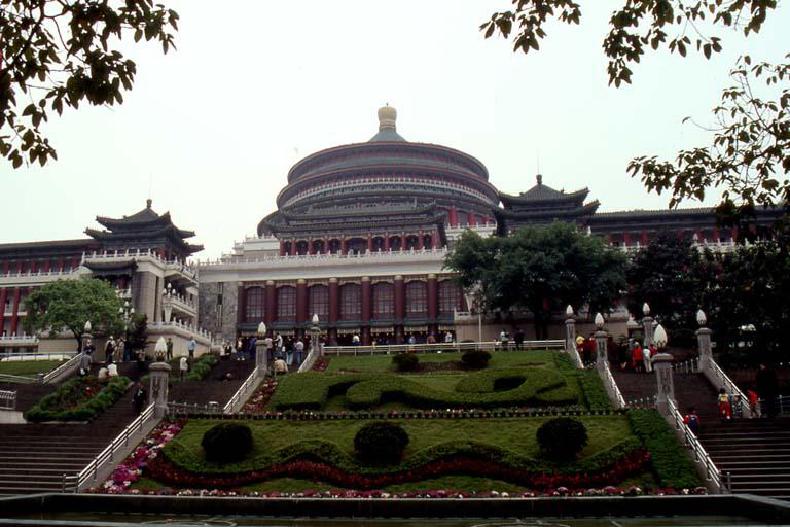
Although more than 3000 years old, the centre Chongqing of today is a busy modern city. You are left in no doubt that China is the country with the largest population in the world.
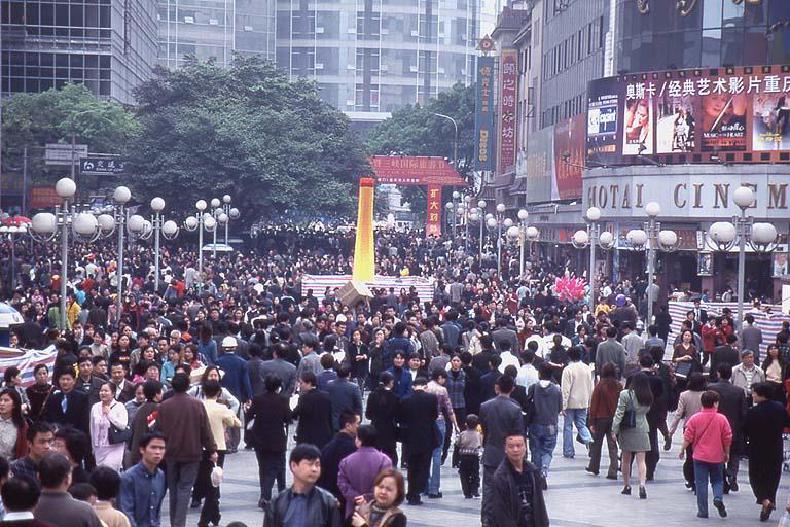
Modern style skyscrapers are everywhere in the centre of the city. Western style clothing is everywhere - this is a great change from the regulation clothing that everyone wore when I first visited China in 1986.
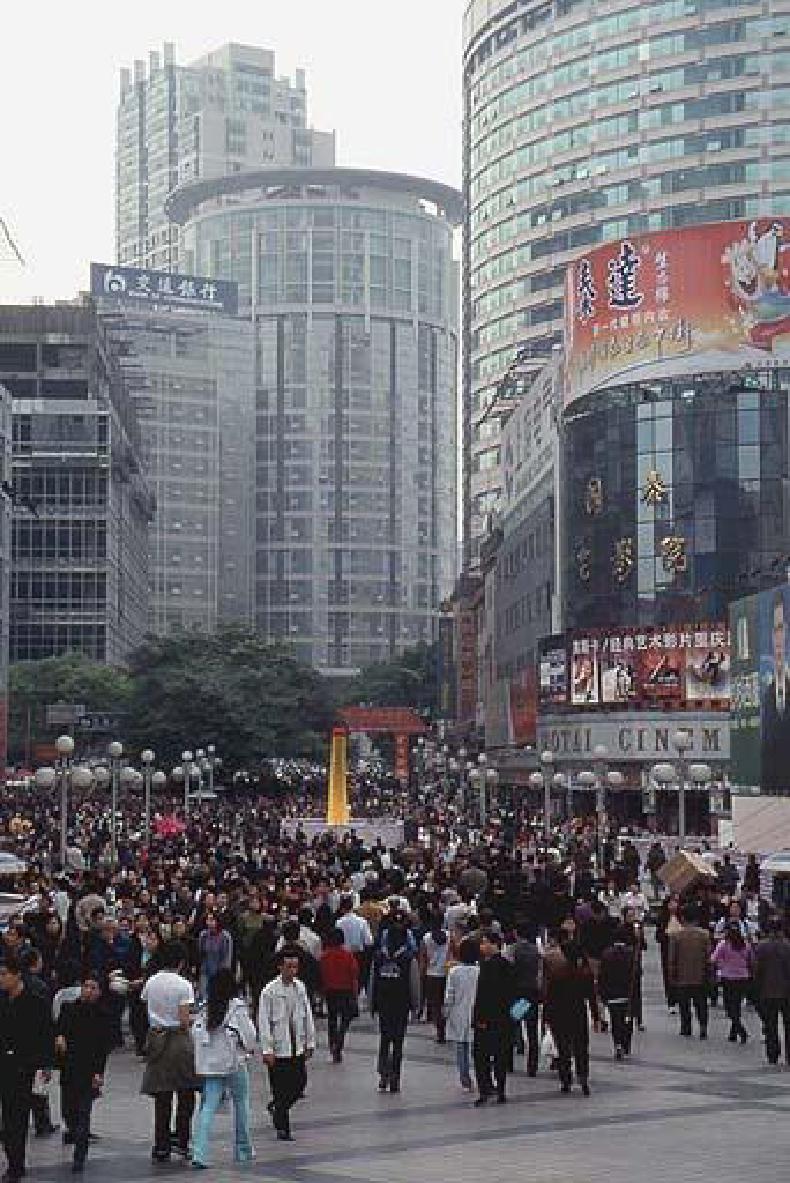
However, it doesn’t take much to realise that these are just recent additions to the city. Only a few blocks away, the skyscrapers turn into old and poorly kept buildings.

Although there has been much development recently, it is clear that most of the population do not enjoy the full benefits of the modern world. The two worlds live uneasily together. Throughout this trip I was amazed at how ordinary people would work in the facade of a modern western world and then go home and live in a totally different world.
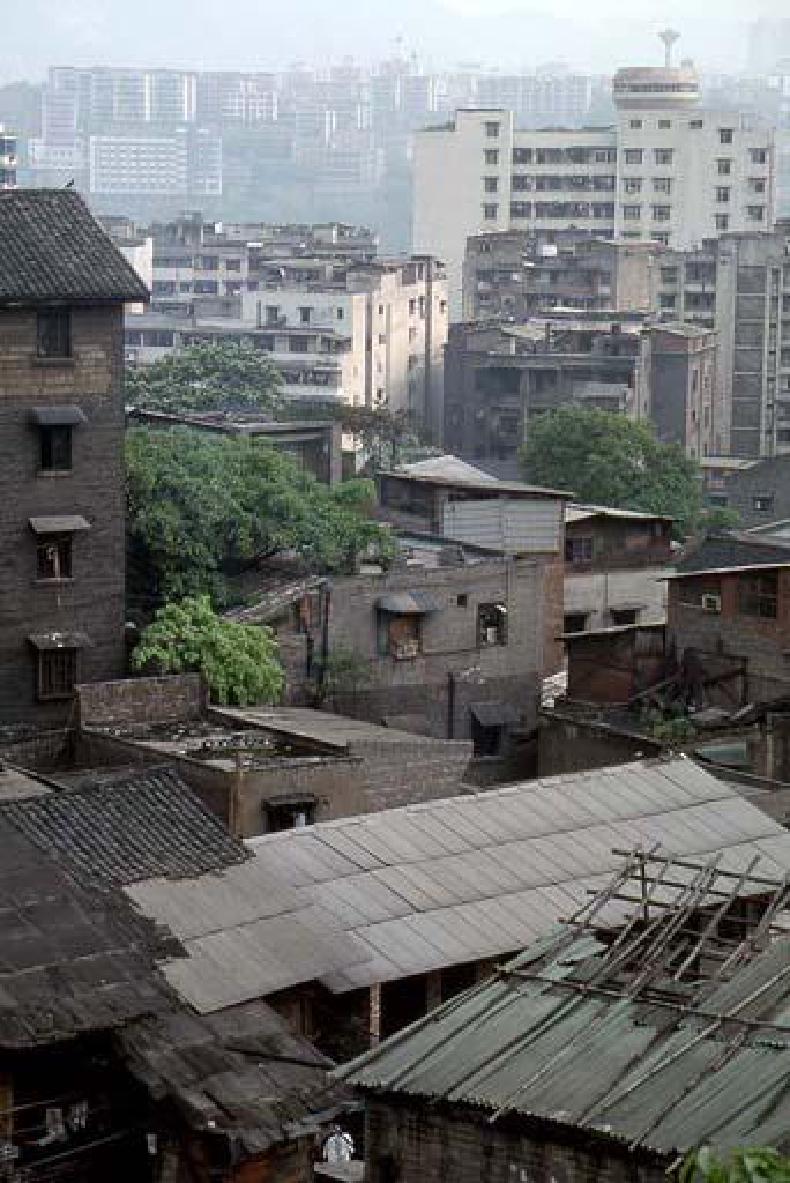
People are strong, and will make the most of whatever situation they find themselves in. Here we see, on the rooftop, a well manacured lawn and a rose garden!
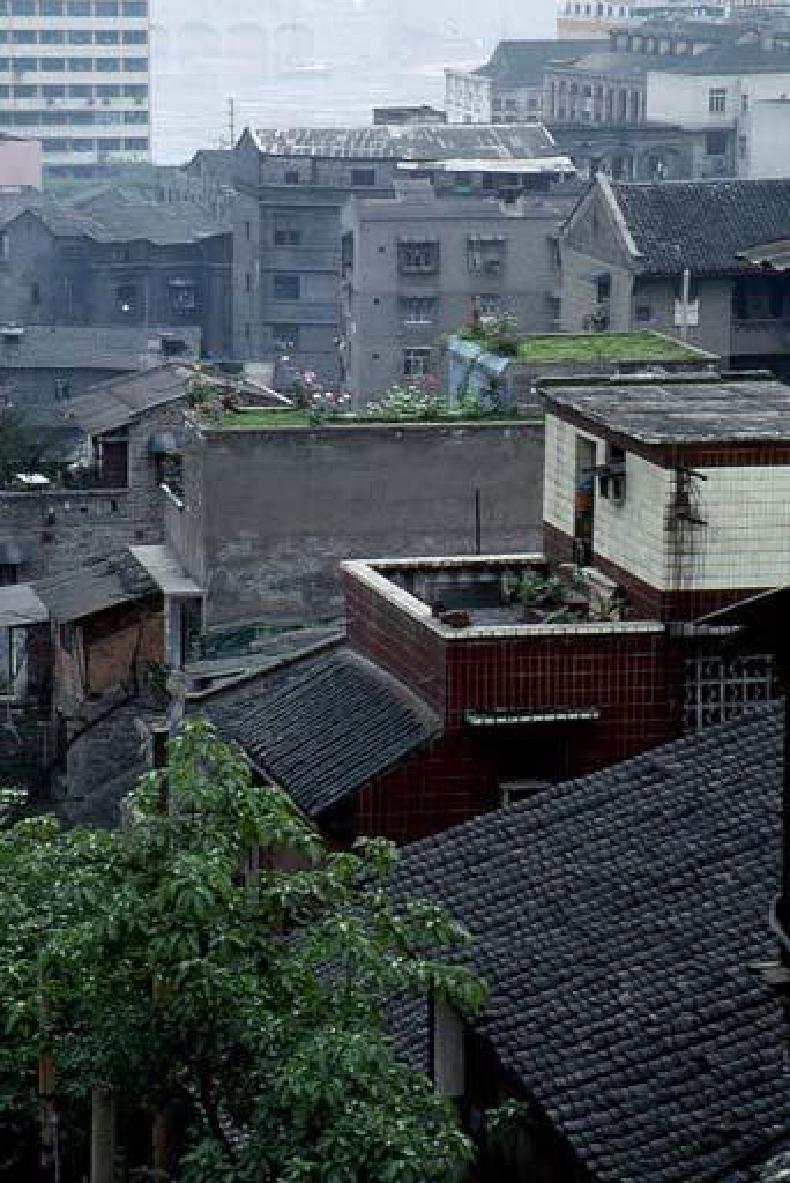
Chongqing lies on the confluence of the Yangtze and Jialing river, and it is here we board our “tourist class” boat that will take us downstream over the next three days. Chongqing has a large modern port facility - but we can’t use it yet. Instead, we get to the boat by walking across a gravel foreshore and tempory moarings - both of which will be underwater when the dam is completed. This photo was taken in the late afternoon - that is not mist, but smog!
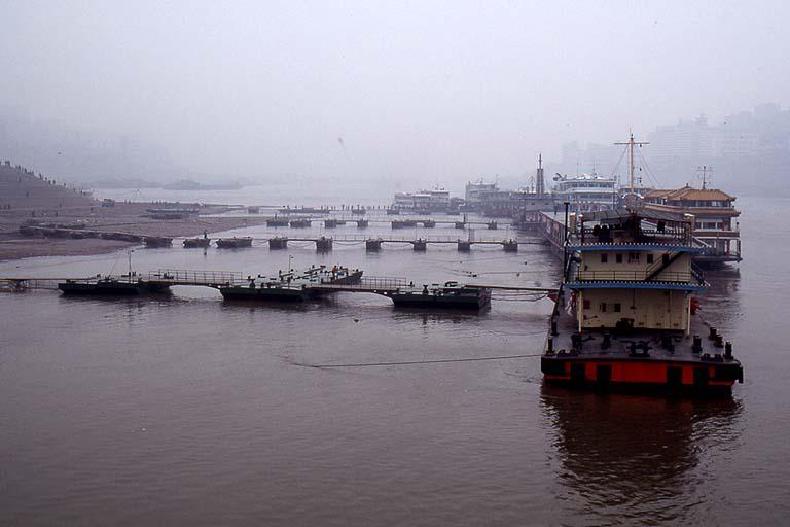
Early the next morning we set off sailing down the mightly Yangzi River. There is a lot of traffic on this river since it is the highway of China. Boats of all types are seen: large and small. It was very easy to spot the “tourist class” boats, as the others could be only be described as old and very old.
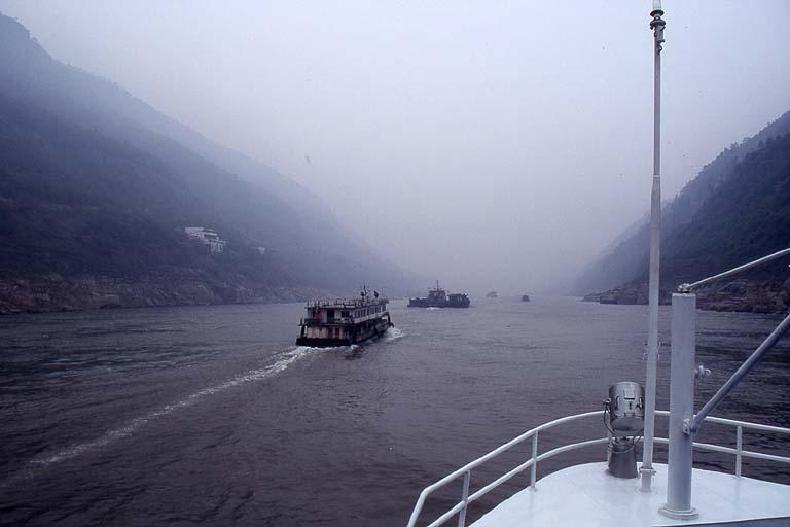
The suburbs of Chongqing extend for many kilometres. The smog is still with us.
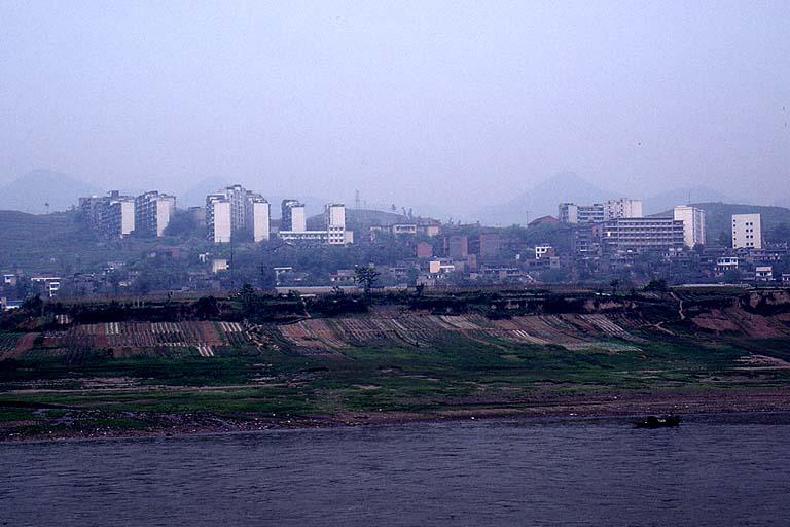
During the journey down the river we saw many factories near the river banks. We were surprised to find such developments and settlements everywhere. Although the Three Gorges is a natural wonder, it is definitely not in the wilderness nor an isolated national park! Many of these factories are coal burning - which is what contributes to the smog and haze that we saw throughout the entire journey.
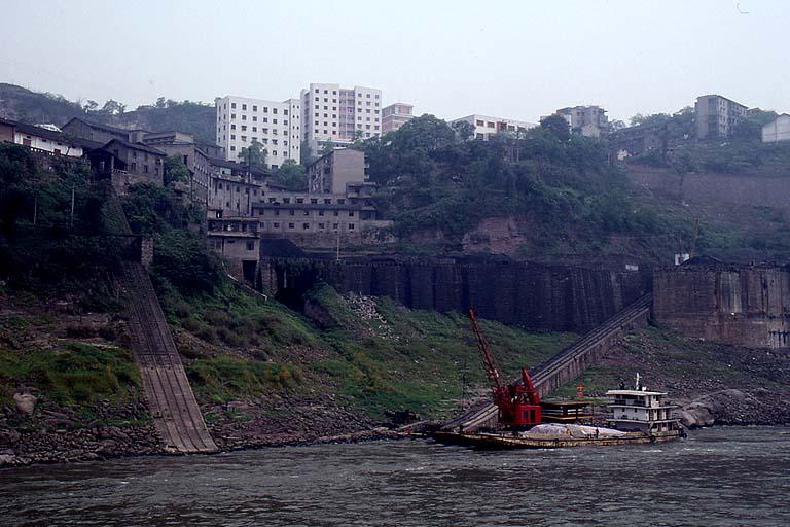
The other thing we saw everywhere was the preparations for when the waters will rise. Here at Fuling, we see a huge sea wall being built (notice the 4 story ship in the background). Today it is a river side city, but tomorrow it will be a huge port on an inland lake.
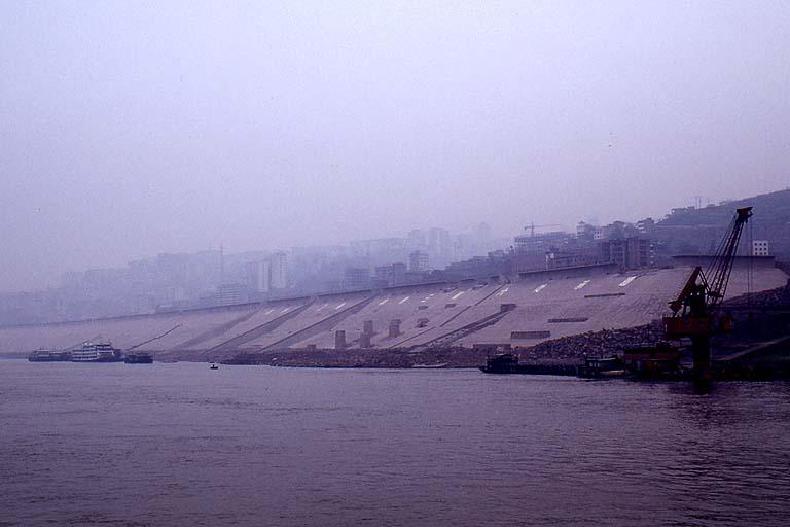
Here we see that large sections of the original city foreshores have been reclaimed and demolished for the wall. The dam will be the biggest in the world, but even more amazing is all the other construction going on upstream to prepare for it.
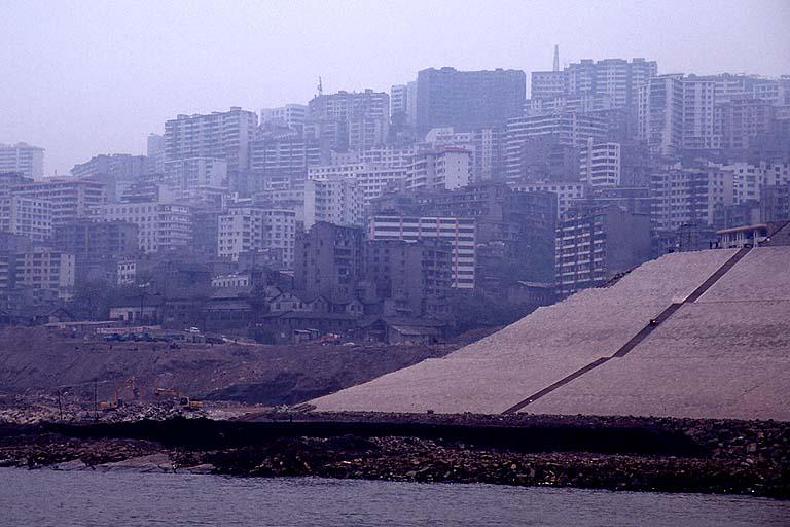
The major stop for tour ships is the city of Fendu. When the waters rise, this whole city will be under water. Currently under construction the other side of the river is the new city of Fendu. The entire population will be relocated there. The lives of many many people will be affected by the dam.
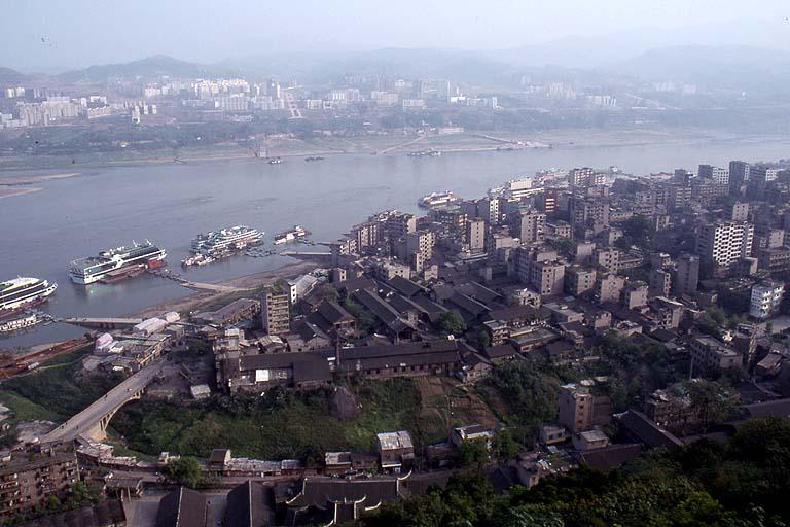
This is a typical street in the current city of Fendu. Notice the street sign that shows where the expected water level will be once the dam has been completed.

Fendu is famous as the “ghost city”. There are many ancient temples that contain sculptures deplicting demons and gruesome scenes of hell. Fortunately, the ancients were smart enough to build them on top of a hill - they won’t be destroyed by the rising waters.

Fendu, ghost city on the hill top.
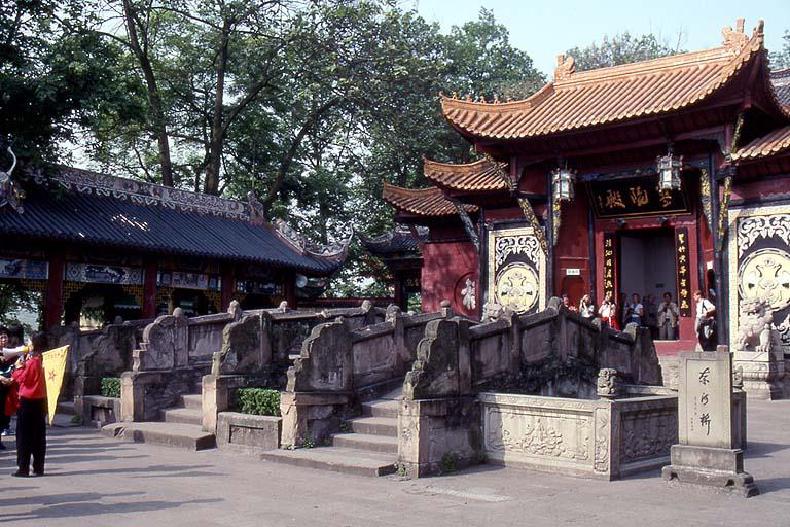
After Fendu comes the riverbanks slowly rise to become mountains - we are entering the Three Gorges.
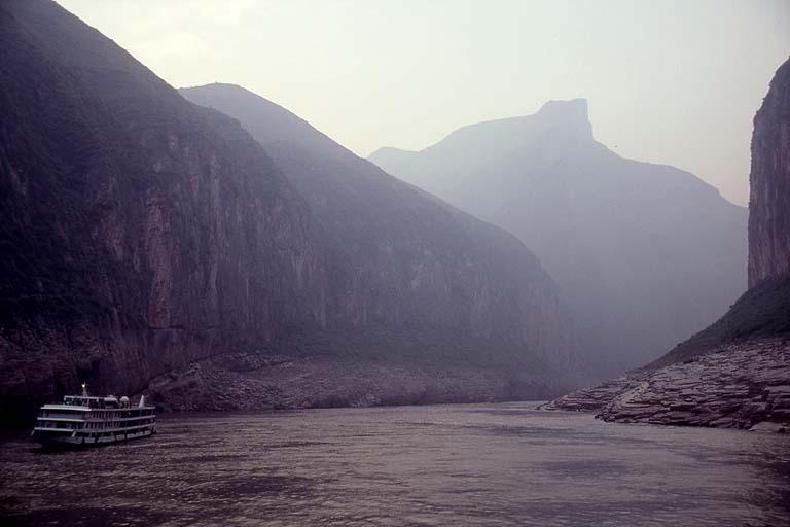
This is the first gorge. We had to get up very early to see this one.
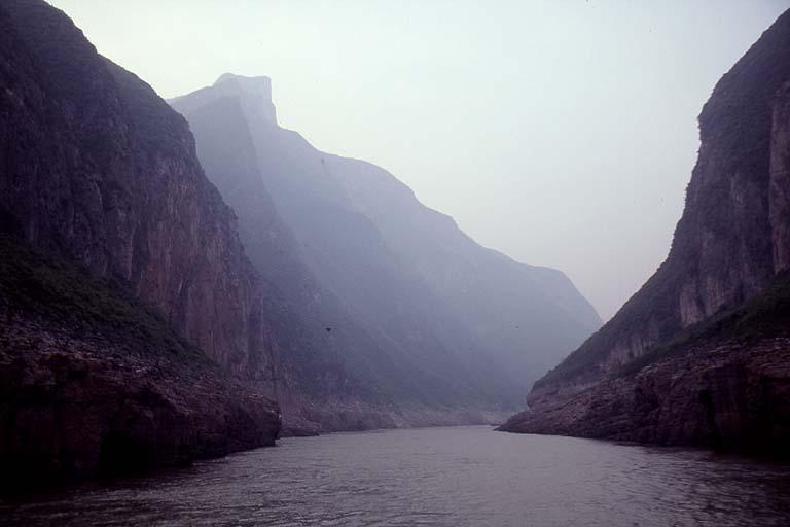
At the end of the first gorge, the sun rises over the mountains. Notice that the smog is still everywhere, giving the scene a very eerie atmosphere.
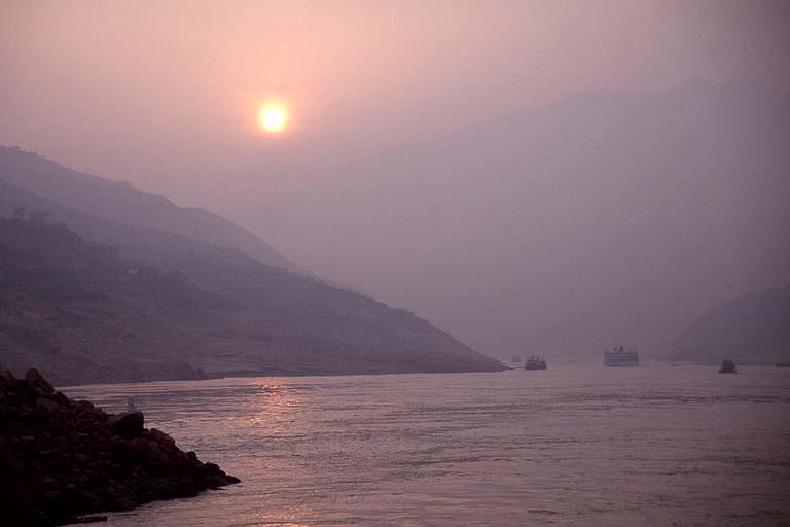
The sun rises further, but the smog is still very thick. We are not the only tourist boat on the river.
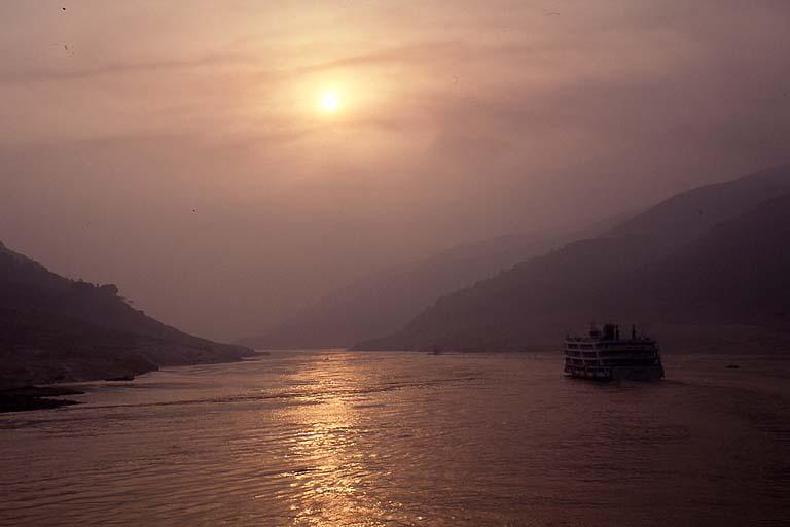
The second gorge is much wider.
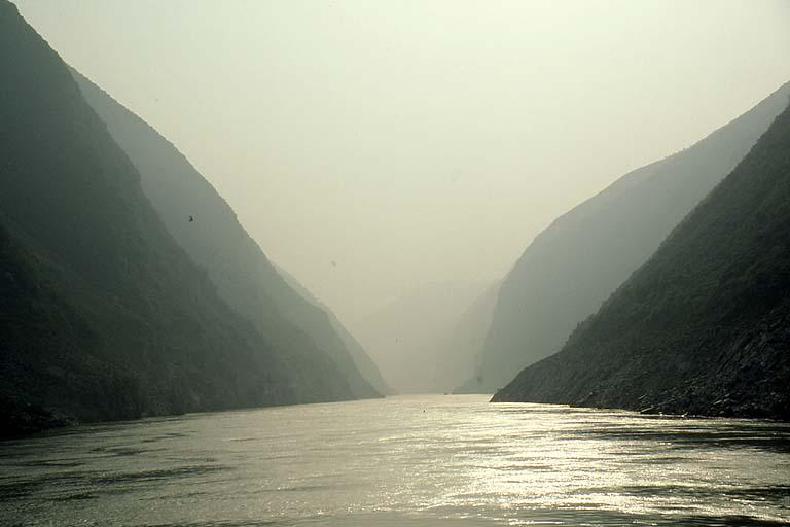
The mountains of the gorge are all around us.

The mountains around the second gorge are very majestic.
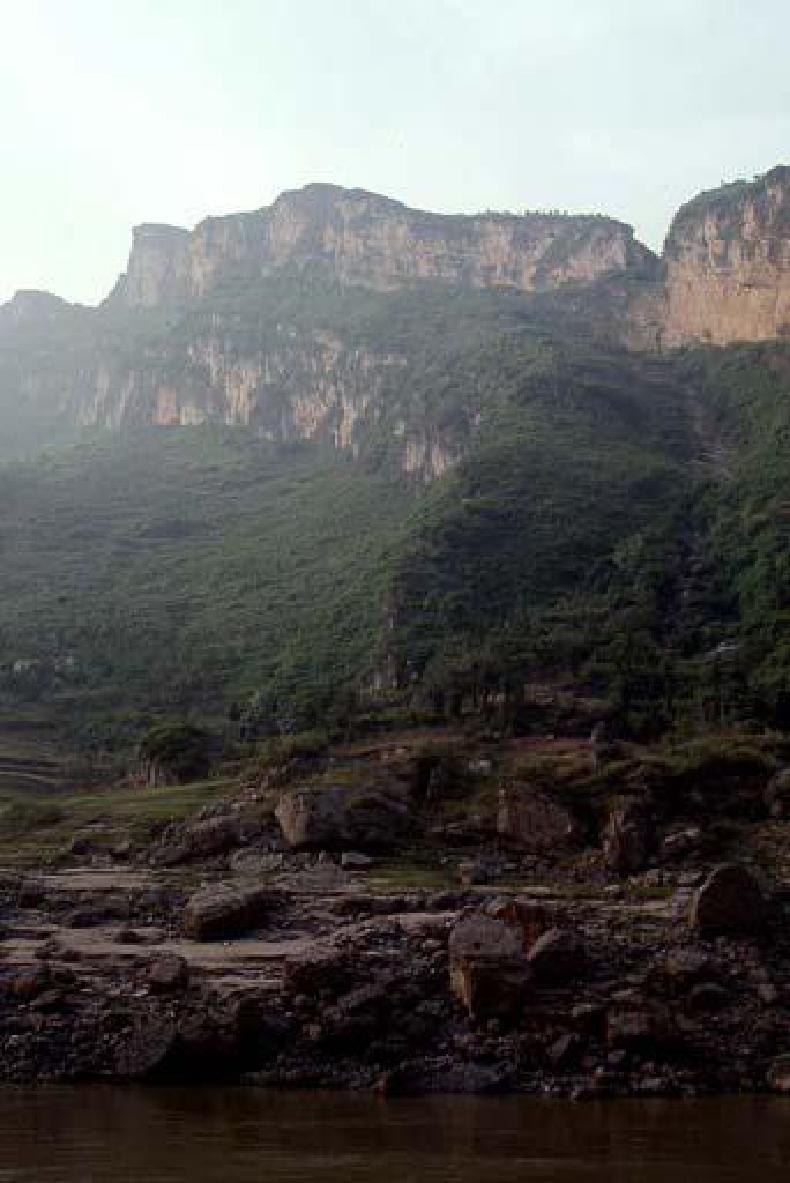
After the second gorge, we transfer to smaller boats to go up the Little Gorge. This is a small creek that feeds into the Yangzi river.
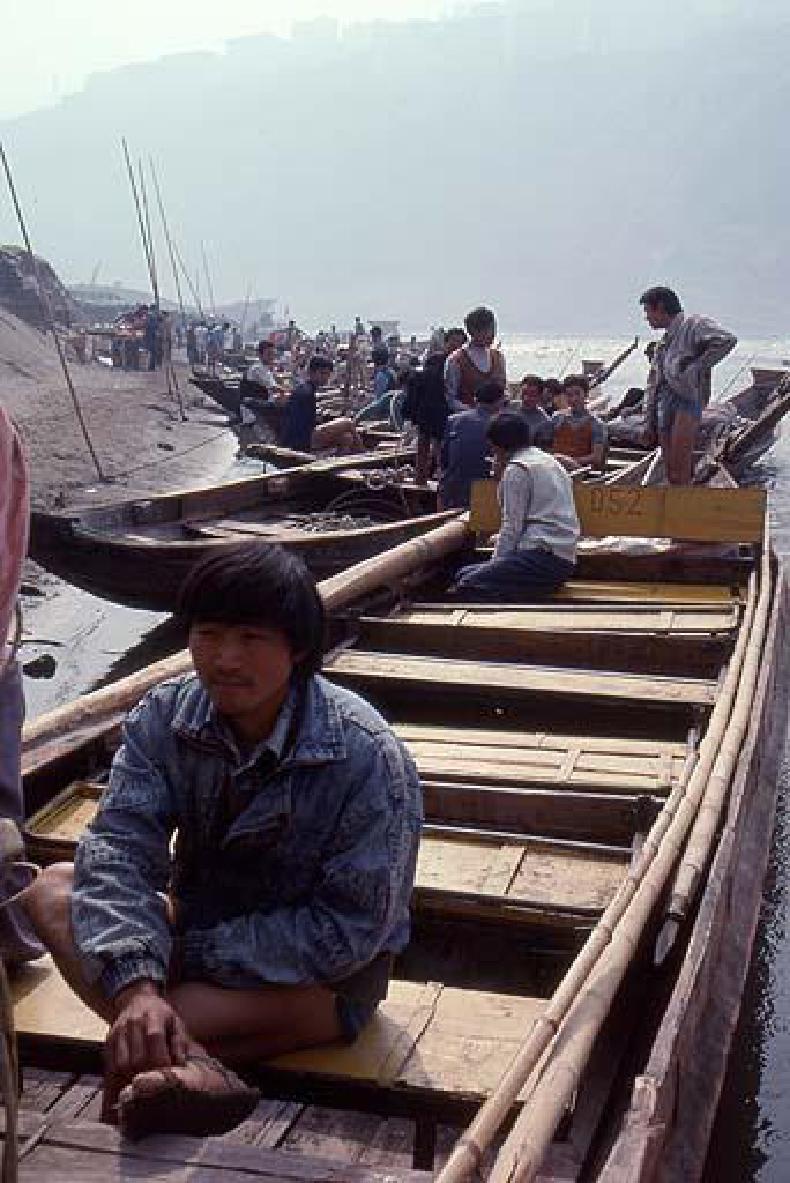
To get up the Little Gorge, the locals manually pull the boats upstream. It’s a hard life they live: poor falmers mostly who try to earn a little extra from the tourist trade. Traditionally they do this naked, but for the benefit of the tourists they now wear clothes. As they pull, they sing traditional songs.

Overshadowing the little gorge is a huge new bridge. It is a constant reminder to them that their way of life, and source of income, is coming to an end. It is also symbolic of the divide in China between poor rural people and the new developments that are leaving them behind.
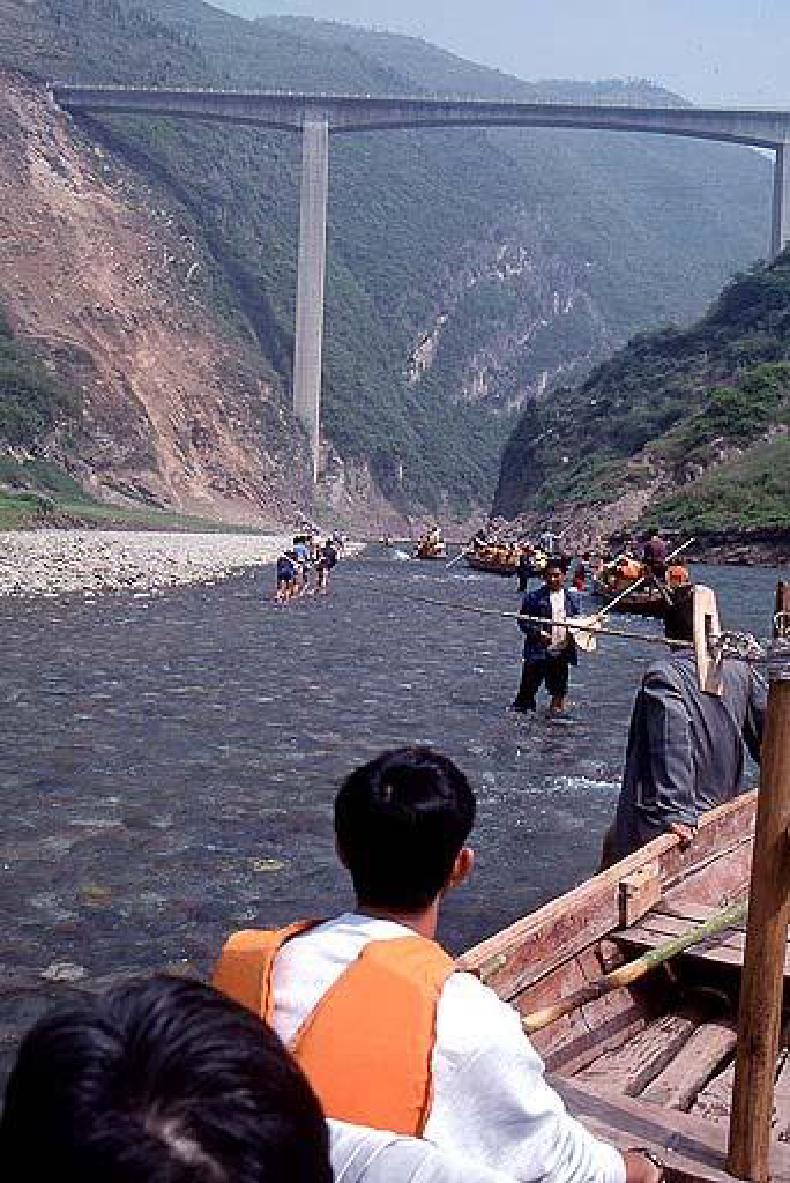
The Little Gorge is very scenic and peacefull. All this will be under 30 metres of water when the dam is completed.

This is as far as we go. About an hour up the inlet and into a tranquil place surrounded by nobel hills and mountains. The sort of place painters paint and poets write about. Of course, the tranquility is broken by a row of souvenier stalls and boatloads of tourists.
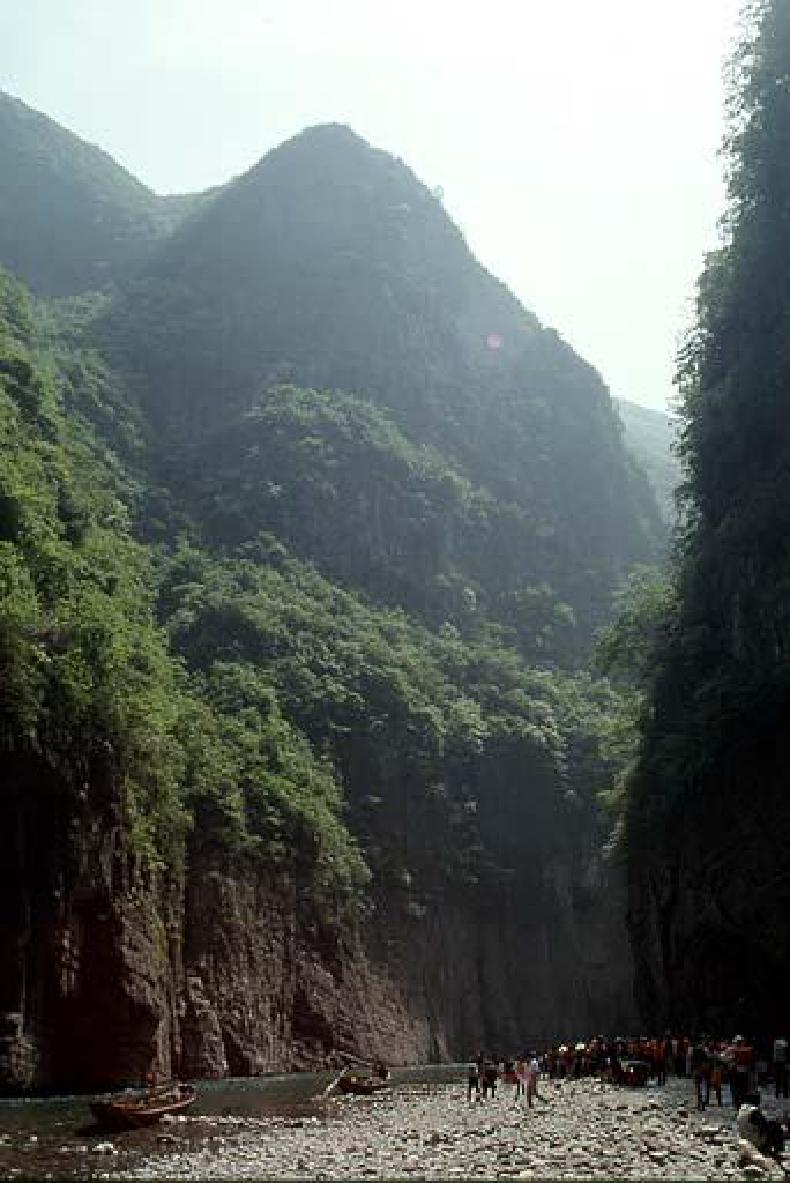
Even though the region is remote and difficult to get to, there are settlements everywhere and farming occurs even on these steep hills.

More spectacular scenary in the little gorge.
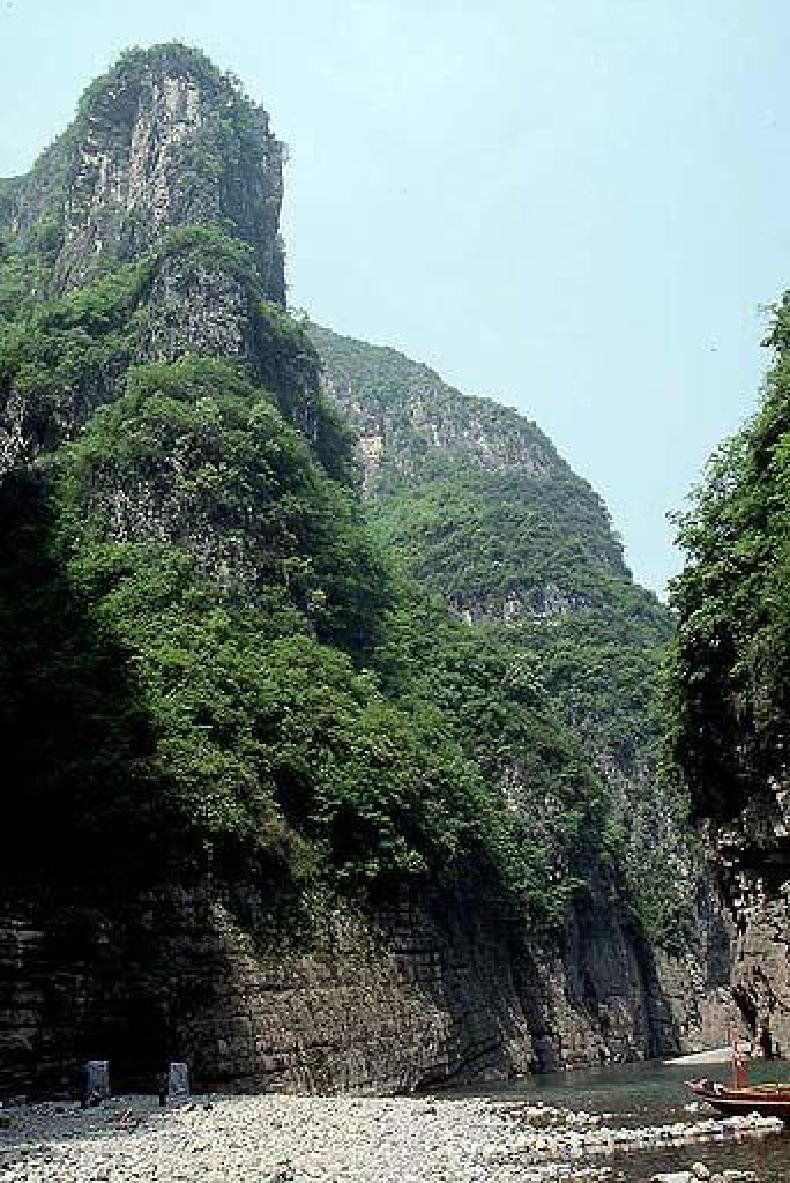
Simple rope sandles worn by the local river boat pullers.
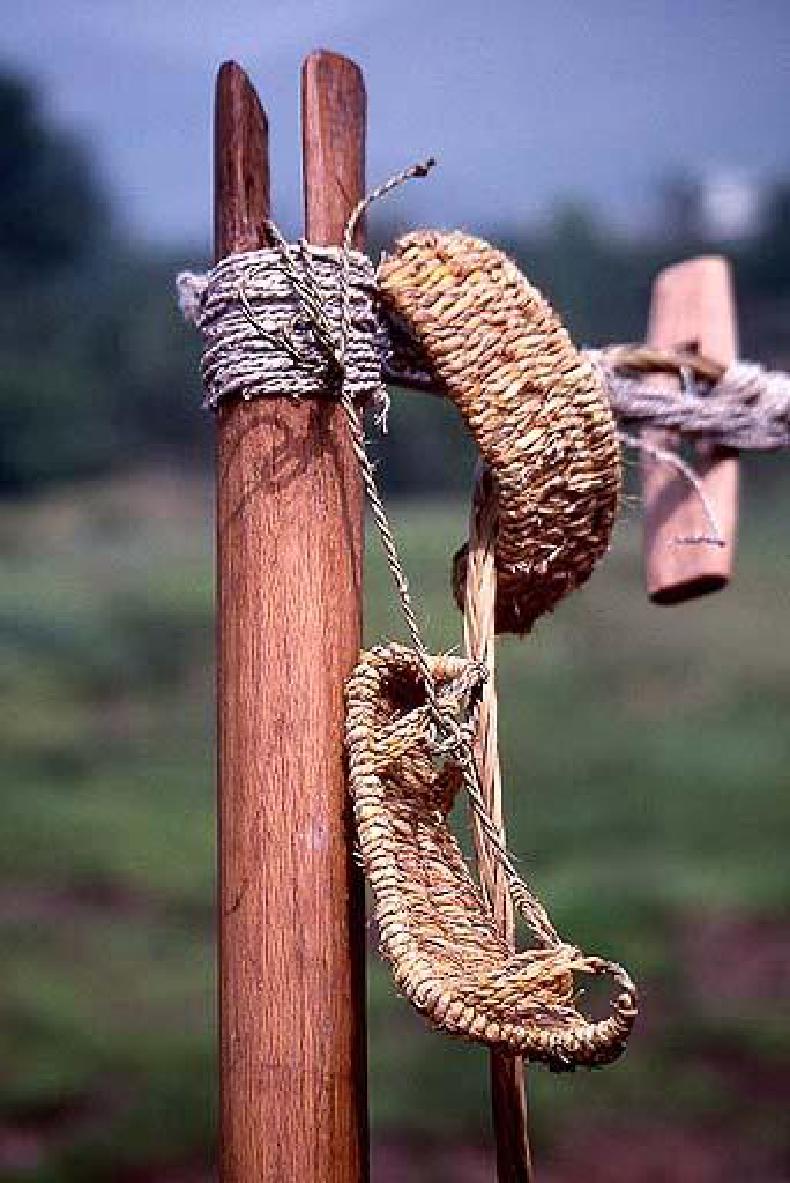
Going down the little gorge is much more easy. All it requires is some steering.
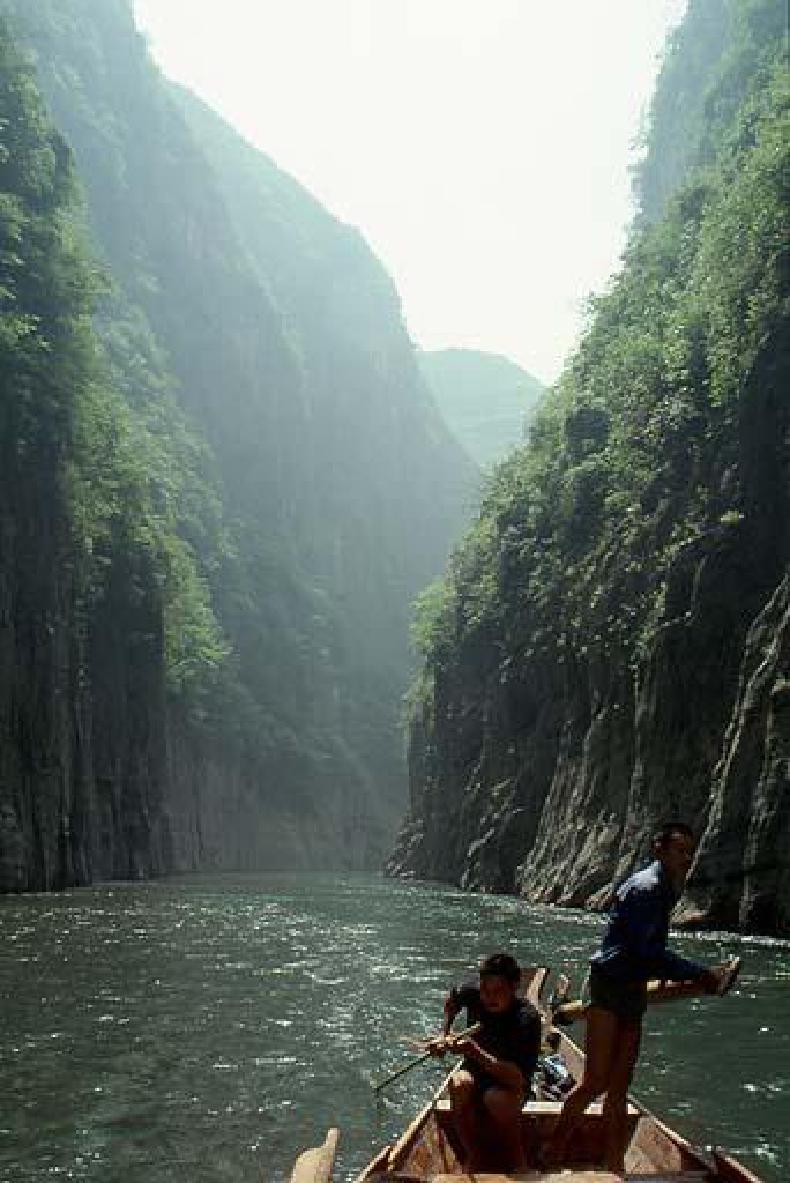
Back on the Yangtze river, we pass many scenes from a rural river life. Traditional fishing boats and villages. Living a life that has not changed for centuries. What’s going to happen to them?
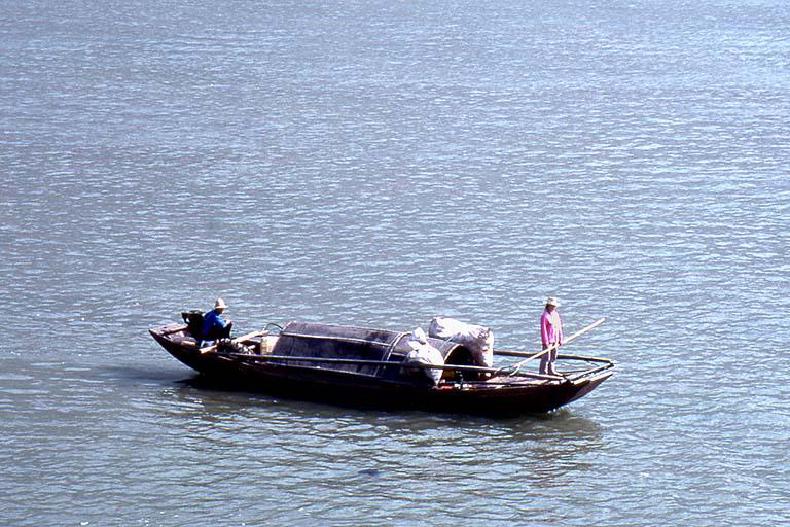
There are constant reminders that the way of life on the river is going to change. Old villages by the river will be no more. New buildings stand above them. I hope they’ve calculated the expected waterlevel correctly.
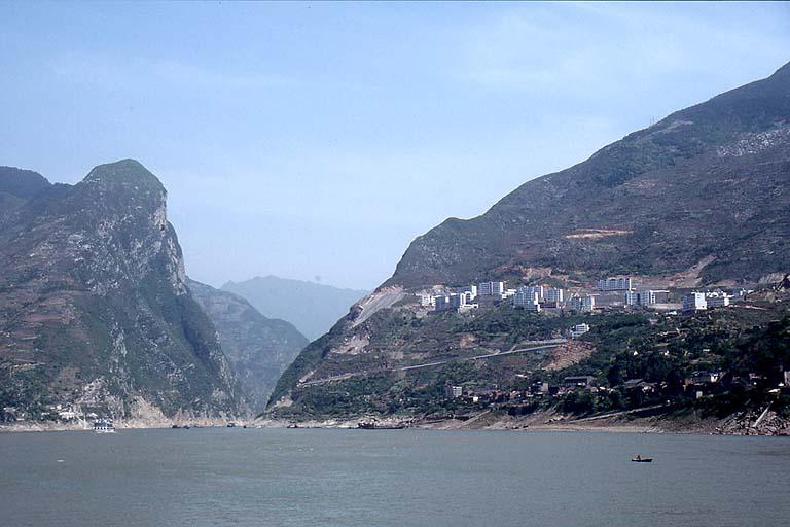
Old bridges will be covered with water. New bridges are being built to replace them.
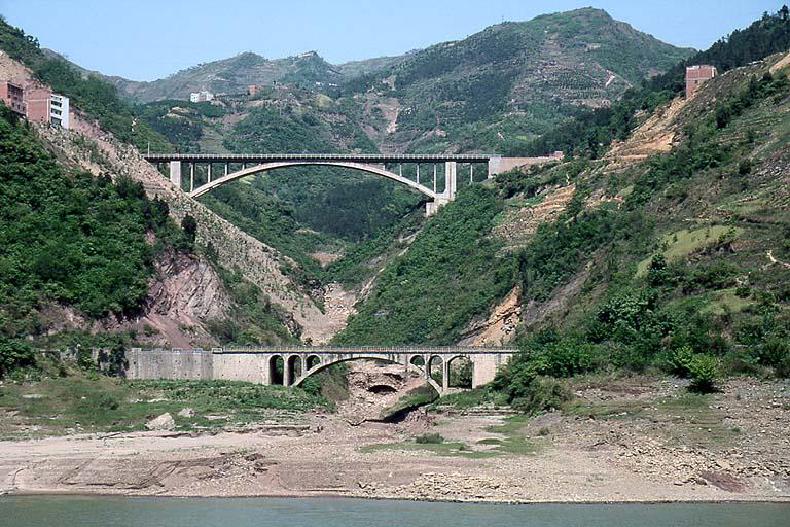
We soon get a glimpse of the Three Gorges Dam from a distance. The first phase of the project was to divert the river around to the right (where that boat is heading) so they can carry out the construction of the main dam wall.
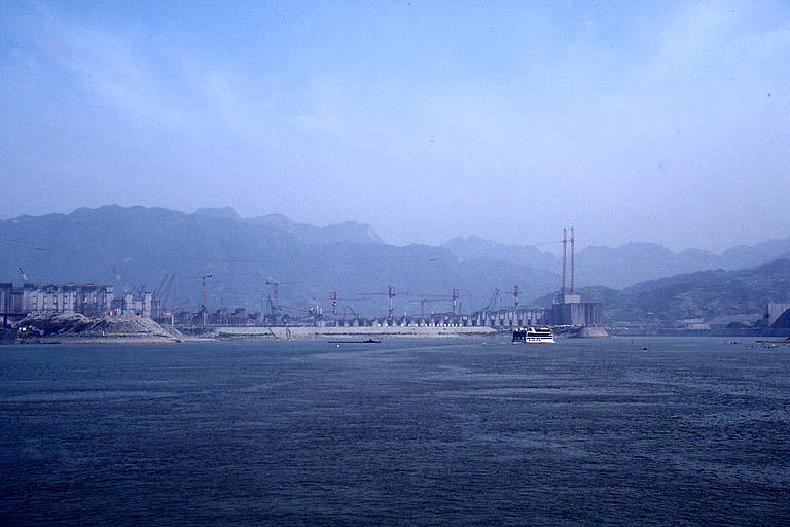
The dam is huge! The new dam wall overshadows small boats.

There is plenty of construction still going on. It is a massive project: the construction site occupies the size of a small city.
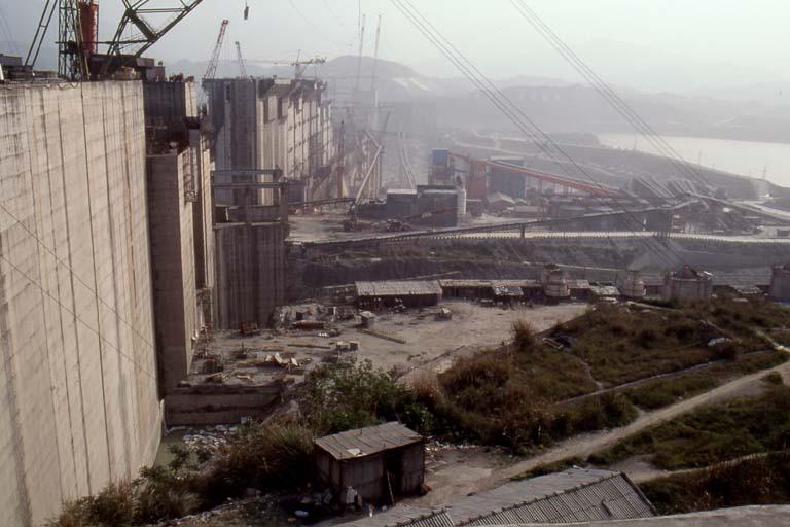
From the top of a hill we can see the size of the construction. The lock being built here is over 2km long, has five stages, and is large enough to transport entire container ships. And there is going to be two of them, to handle upstream and downstream traffic at the same time.
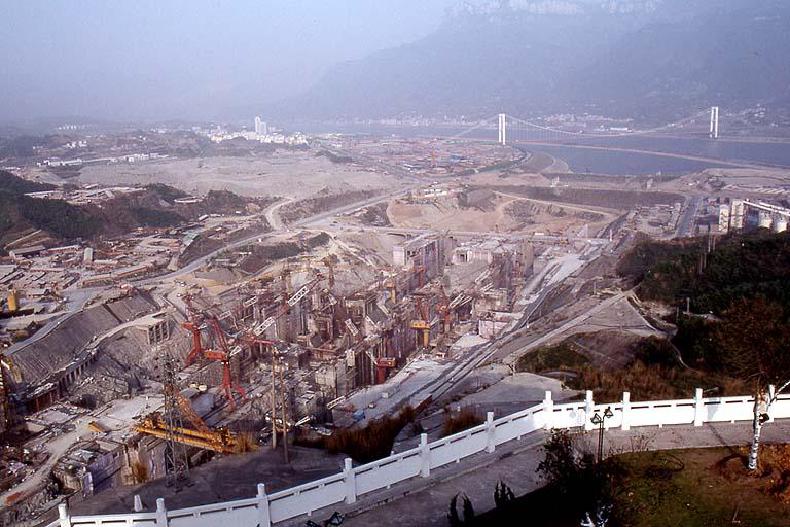
Our river journey ends at the ancient town of Yiching. Here is a historical gate in the old fortified part of the city.

From Yiching, we travel overland to the city of Wuhan. This is the famous Crane Tower in Wuhan.
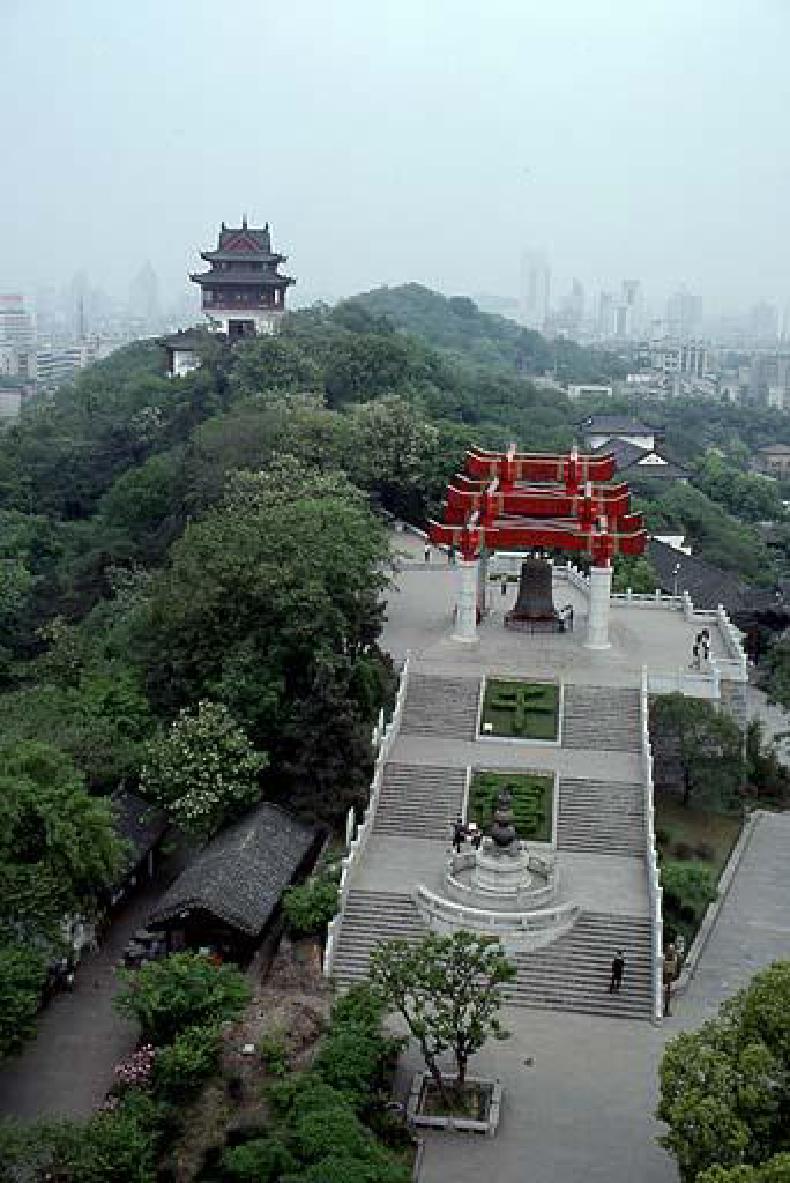
Wuhan is a bustling city. This bridge was built in 1957, and is famous as one of communist China’s first major engineering feat. China is an amazing country, with a long and rich history. The challenge for the future is to manage the rapid change that is happening everywhere you look.
